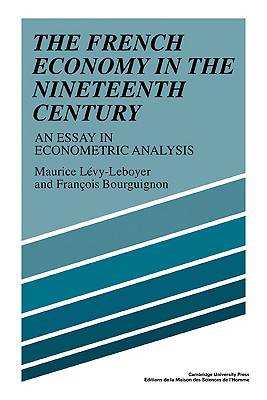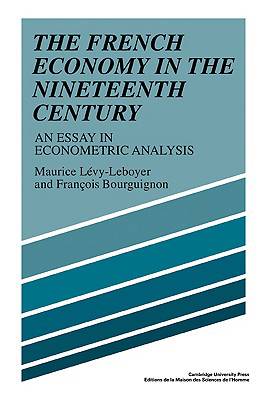
Door een staking bij bpost kan je online bestelling op dit moment iets langer onderweg zijn dan voorzien. Dringend iets nodig? Onze winkels ontvangen jou met open armen!
- Afhalen na 1 uur in een winkel met voorraad
- Gratis thuislevering in België vanaf € 30
- Ruim aanbod met 7 miljoen producten
Door een staking bij bpost kan je online bestelling op dit moment iets langer onderweg zijn dan voorzien. Dringend iets nodig? Onze winkels ontvangen jou met open armen!
- Afhalen na 1 uur in een winkel met voorraad
- Gratis thuislevering in België vanaf € 30
- Ruim aanbod met 7 miljoen producten
Zoeken
The French Economy in the Nineteenth Century
An Essay in Econometric Analysis
Maurice Levy-Leboyer, Francois Bourguignon, Frangois Bourguignon
Paperback | Engels
€ 67,95
+ 135 punten
Uitvoering
Omschrijving
The modernisation of the French economy in the nineteenth century raises a difficult question for the historian. The country experienced definite advances but also a long period of stagnation that for a while threatened its competitiveness and capacity to expand. The alternation of advances and setbacks is sometimes attributed to the effects of long-run cycles or to political events. Although these factors play a significant role in this study, the objective is to examine whether the French performance followed a fundamental pattern at a macro-economic level and, specifically, whether it was determined by collective behaviour that made adaptation to the constraints of technical progress and international competition more difficult and slower. The work is divided into two complementary parts. The first is historical and reviews the stages of French growth and the main hypotheses that explain this development. The second uses econometric analysis to test the validity of the mechanisms proposed and, by modelling the economy, examines its evolving structure and dynamics with greater precision. The statistical series that form the basis of this study are collected in the appendix for easy reference.
Specificaties
Betrokkenen
- Auteur(s):
- Uitgeverij:
Inhoud
- Aantal bladzijden:
- 388
- Taal:
- Engels
Eigenschappen
- Productcode (EAN):
- 9780521103411
- Verschijningsdatum:
- 11/12/2008
- Uitvoering:
- Paperback
- Formaat:
- Trade paperback (VS)
- Afmetingen:
- 152 mm x 229 mm
- Gewicht:
- 566 g

Alleen bij Standaard Boekhandel
+ 135 punten op je klantenkaart van Standaard Boekhandel
Beoordelingen
We publiceren alleen reviews die voldoen aan de voorwaarden voor reviews. Bekijk onze voorwaarden voor reviews.











